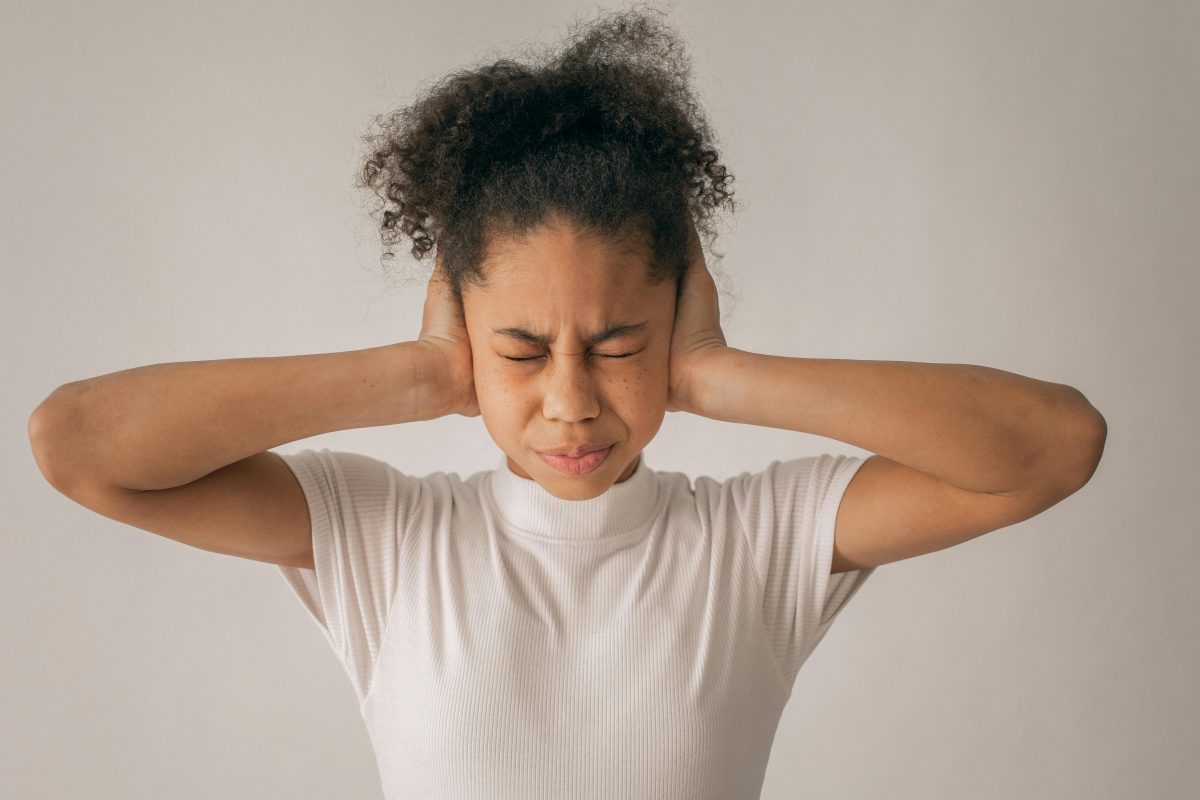Understanding Anxiety in Childhood

Children’s anxiety is more than just a passing phase; it’s a genuine, frequently complicated condition that can take many different forms, such as:
- Anxiety Disorder with a Generalized Headache
- Anxiety in Social Situations
- Anxiety Regarding Separation
While every type presents different difficulties, common indicators like constant worry, sleep disruptions, and physical symptoms like headaches should cause concern. It has a significant effect on a child’s life, impairing their capacity to learn, form friendships, and enjoy childhood. Early detection of these indicators can facilitate successful interventions, preventing worry from overshadowing their potential or impeding their growth. Children can learn to control their anxiety and live less afraid and more fulfilled lives if they receive the proper help.
Managing Childhood Anxiety: Parental Strategies

The Parent’s Role in Anxiety Management
It is critical for parents to recognize the subtle differences between anxiety that is typical and anxiety disorders. Anxiety is a normal aspect of growing up for all children; it can show up as trepidation before exams or in unfamiliar situations. On the other hand, anxiety may indicate an anxiety disorder if it begins to interfere with day-to-day activities. It is crucial for parents to recognize these early indicators and seek medical attention.
Anxiety levels in children are greatly influenced by the actions and attitudes of their parents. Youngsters often emulate their parents’ emotional reactions. If the parents are present:
- Too much anxiety
- Being overly cautious
These behaviors may be adopted by kids, who may then see the world as more dangerous. On the other hand, parents who provide an example of effective coping mechanisms, like:
- Solving problems
- Reasoning with reason
can impart to their kids better anxiety management skills.
It’s crucial to establish a welcoming and understanding environment. Including in this are:
- Taking an active interest in a child’s anxieties and not brushing them off
- Promoting candid dialogue
- Giving comfort and affection
An atmosphere like this gives a youngster the courage to take on obstacles and lessens the loneliness that comes with anxiousness. A secure and supportive home environment is one of the biggest ways parents can lessen the negative effects of anxiety on their children.
To sum up, parents play a critical role in helping children manage their anxiety. Key tactics include identifying the warning signals, influencing through constructive behavior, and fostering a supportive environment. By using these strategies, parents may help their kids overcome worry and set the stage for a resilient and joyful future.
Strategies for Communication: Promoting Transparency and Compassion

It’s a fine art to talk to your youngster about their emotions and anxieties. Finding the ideal mix is crucial to making sure they experience support and being heard. To begin, set aside specific times during the day to check in with them. These don’t have to be official sit-downs; having casual conversations with one another while cooking or going for a stroll might lead to more in-depth discussions.
It is crucial to promote honest and open communication. Without passing judgment, express a sincere interest in their ideas and emotions. As a result, they are more willing to confide in you about their concerns. Recall that the goal is to make them feel understood and capable of managing their emotions, not to solve all of their problems.
It’s critical to use language and examples that are age-appropriate. Make difficult feelings easier to understand by connecting them to familiar circumstances. This could include describing nervousness to younger kids as the “butterflies” in their stomachs before a school play. For older kids, compare the struggles faced by fictional characters in movies or novels. This reduces the concept’s scary factor while also making it more relatable.
In the end, these techniques are about creating a foundation of trust and understanding rather than merely talking. You are imparting important emotional skills to your child by being present, actively listening, and acting empathetically. This method not only allays their present fears but also gives them the skills they need to confidently take on new challenges in the future.
Expert Intervention and Knowing When to Ask for Assistance

For parents, knowing when to get expert assistance is essential. Attention should be given to anxiety that interferes with a child’s everyday existence. This includes social settings avoided, academic challenges, and enduring worries that do not go away with comfort. It’s time to think about getting help from a professional when these symptoms appear.
To meet the requirements of children, a range of therapies and treatments are offered. One notable exception is Cognitive Behavioural Therapy (CBT), which focuses on changing unfavourable cognitive processes to enhance behaviour. In certain situations, medication may also be advised, but only under close medical care. By giving kids coping skills, these methods hope to lessen the hold that worry has over their lives.
It takes work to find the correct mental health provider. Your general practitioner (GP) can offer a recommendation. Seek out professionals who specialize in the mental health of children and make sure they get along well with younger kids. It’s about coming together as a team, with your child in the center, and making a commitment to walking the path to wellbeing.
Recall that asking for assistance is a display of strength. It all comes down to giving your child the tools they require to succeed in spite of their anxiety-related obstacles.
Providing Therapy Support for Your Child

Your participation as parents is crucial to your child’s therapeutic journey. Comprehending your part in this process can greatly improve the results of therapy. It all comes down to actively participating and using the techniques you learn in class at home. This gives your youngster a reliable support system in addition to helping with the consolidation of new abilities.
At first, practicing treatment practices at home may seem intimidating. Begin with something basic:
- Include routines that your child learns in therapy, such as exercises or practices.
- Before going to bed, engage in deep breathing exercises or talk about the highs and lows of the day.
Consistency is the key. Frequent practice fortifies these abilities, increasing your child’s ability to use them when they’re feeling anxious.
The best ally you have is patience. There are ups and downs on the trip that is therapy. It’s important to control your expectations. Development could occasionally be non-linear and sluggish. Appreciate the little things and never waver in your support. Your child’s healing path is greatly aided by your conviction in the procedure and your patience. Recall that you are not alone. Therapists are available to help assist both you and your child. Never be afraid to ask for guidance on how to provide your child with more at-home support.
Avoidance and Developing Resilience

Proactive methods are the first step towards preventing anxiety from taking hold in a child’s life. It’s all about creating a foundation that helps a youngster overcome obstacles and prevent anxiousness from occurring. Developing children’s resilience is like giving them an invisible barrier to protect them from the daily stresses that come with life.
Setting an example of appropriate coping mechanisms is one tactic that works. Youngsters observe carefully and imitate the behaviors they witness. When parents manage their stress by:
- Reason and composure, they convey a strong message.
This is a priceless lesson in emotional intelligence.
Additionally, building resilience in kids entails instructing them on:
- See setbacks and failures as chances for personal development. This kind of thinking, referred to as a growth mindset, promotes persistence and hard work—qualities that are crucial for resilience.
Children who understand that hard work and dedication can increase their abilities are more inclined to rise to challenges and persevere in the face of setbacks.
Ultimately, it is impossible to exaggerate the value of honest communication. Children are encouraged to communicate their fears when they are raised in a setting where emotions are freely shared and evaluated without bias. This supports the idea that asking for assistance is a strength rather than a weakness and aids in the early detection of possible problems. By means of these conversations, parents can reinforce the child’s stress management toolkit by further instilling coping strategies.
When combined, these techniques offer a thorough method for reducing anxiety and fostering resilience in kids. Parental modeling of healthy coping strategies, resilience education, and open communication can all have a big impact on a child’s capacity to handle life’s challenges with poise and confidence.
To sum up
Understanding and action are the first steps towards empowering kids. Despite its challenges, this trip is full with joy and growth chances. Parents may help their children navigate the intricacies of anxiety by developing open communication, identifying positive coping mechanisms, and identifying early indications of anxiety. These initiatives not only lessen anxiety’s negative effects right away but also lay a strong basis for the future. In order to nurture our children’s potential for a better, less anxious tomorrow, let us embrace this route with patience and hope.
Addressing Childhood Anxiety: Strategies for Parents FAQs
Yes, diet can influence a child’s anxiety levels, as certain foods and beverages may exacerbate symptoms. Foods high in sugar and caffeine can increase restlessness and make anxiety symptoms worse. Offering a balanced diet with plenty of whole foods, vegetables, and fruits can help stabilize their mood and reduce anxiety.
Mindfulness and meditation can be effective tools for helping children with anxiety by teaching them to focus on the present moment and reduce overwhelming thoughts. These practices can help children learn to calm their minds and regulate their emotions, providing a sense of peace and control. Introducing simple mindfulness exercises or guided meditations tailored to children can be a good way to start incorporating these practices into their routine.
Normal childhood fears often relate to specific situations or phases and usually subside on their own, whereas anxiety is more pervasive and persistent, affecting various aspects of a child’s life. If fears become overwhelming, lead to avoidance behaviors, or interfere with daily activities, it may indicate an anxiety disorder. Observing your child’s behavior and reactions over time can help in distinguishing between typical fears and more serious anxiety.
Encouraging your child to express their feelings and worries is a crucial step in helping them cope with anxiety. Providing a safe and supportive environment where they can talk about their fears without judgment helps them feel understood and less alone. Additionally, teaching them coping strategies like deep breathing can empower them to manage their anxiety.
Sleep is critically important in managing childhood anxiety, as insufficient sleep can exacerbate anxiety symptoms. A regular sleep schedule and a calming bedtime routine can help ensure your child gets enough restful sleep. This, in turn, can help them feel more relaxed and better equipped to handle stress.
Anxiety in children can manifest as persistent worry, avoidance of social situations, or physical symptoms like headaches and stomachaches. These signs can interfere with their daily activities and school performance. It’s important for parents to recognize these symptoms early to provide the necessary support.
Exercise plays a significant role in reducing anxiety in children by releasing endorphins, which are natural mood lifters. Regular physical activity can help lower stress levels, improve sleep, and boost self-esteem. Encouraging your child to engage in activities they enjoy, such as biking, swimming, or team sports, can be an effective way to help manage their anxiety.
A consistent routine provides a sense of security and predictability for children, which can significantly reduce anxiety levels. Knowing what to expect from their day helps to minimize the uncertainty that often fuels anxiety. Incorporating regular times for meals, homework, and relaxation into their daily schedule can help children feel more in control and less anxious.
If your child’s anxiety is interfering with their ability to attend or perform in school, it’s important to communicate with their teachers and school counselor. They can work with you to implement accommodations that can help your child feel more comfortable and succeed academically. Additionally, seeking the help of a mental health professional can provide your child with strategies to manage their anxiety in the school environment.
You should consider seeking professional help if your child’s anxiety is severe, persistent, and interferes with their daily activities, relationships, or happiness. A mental health professional can assess your child’s needs and provide tailored strategies and interventions. Early intervention can be key in helping your child develop healthy coping mechanisms and improve their quality of life.

